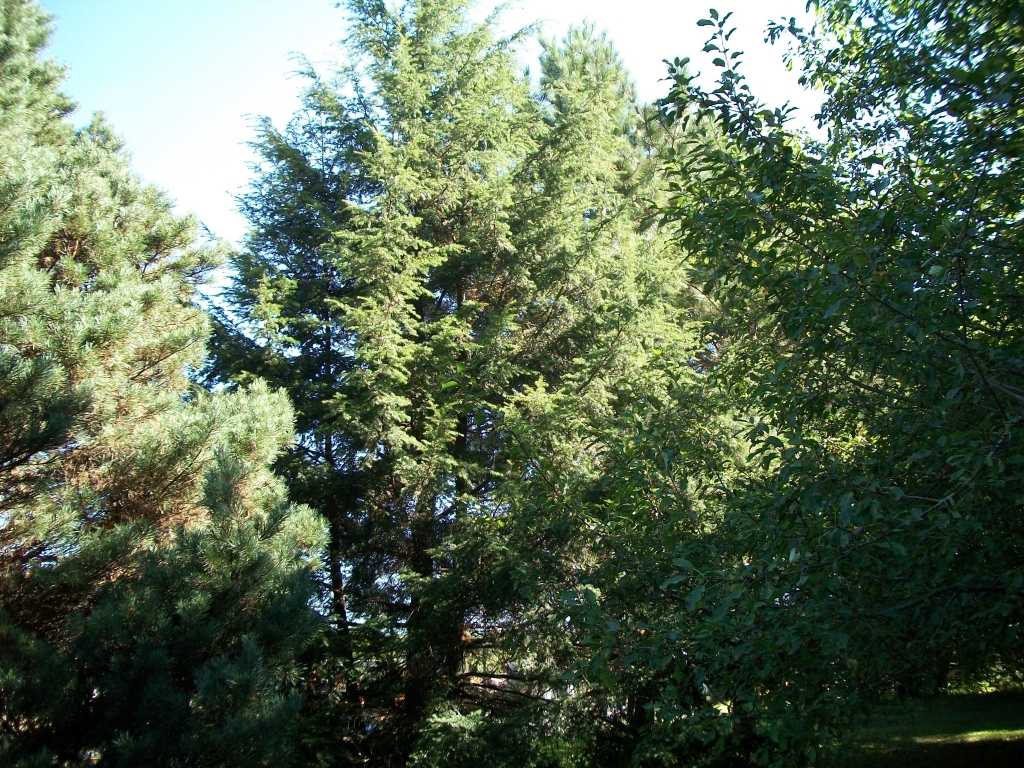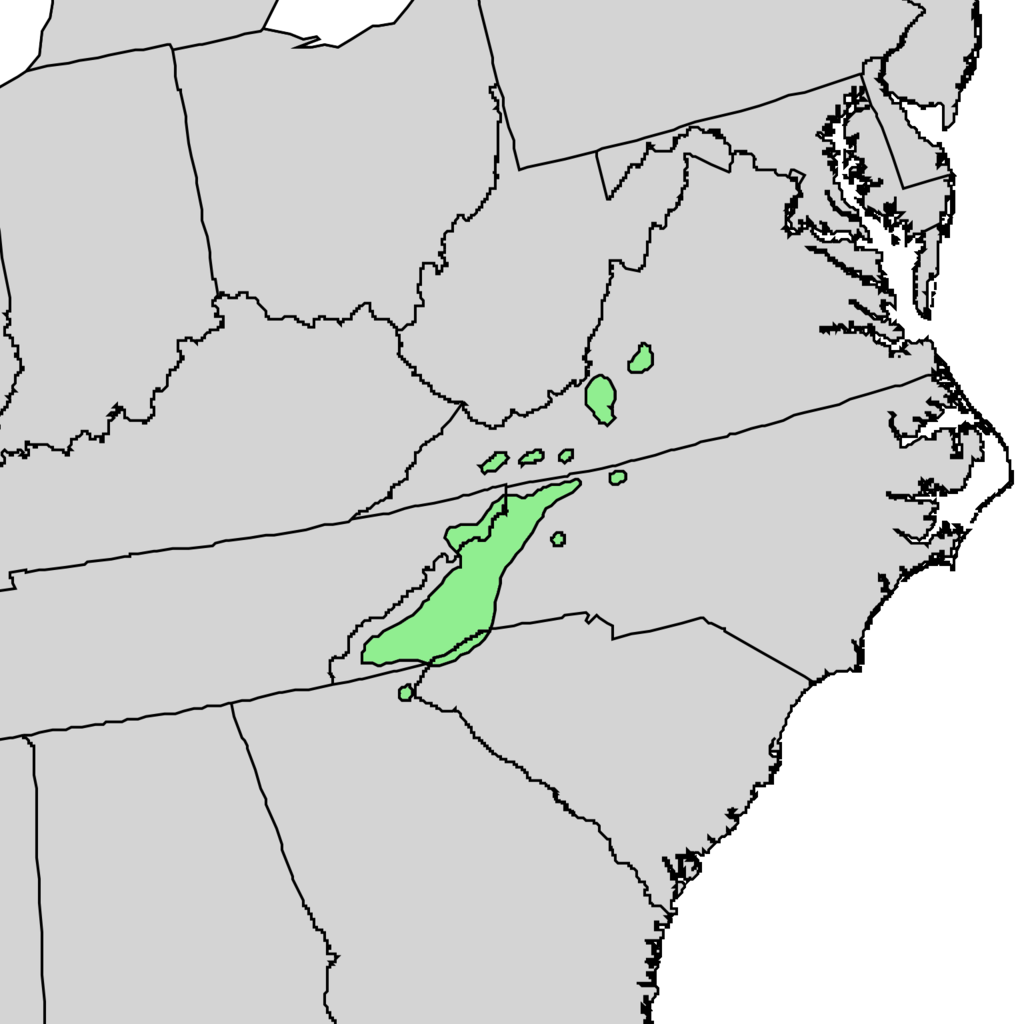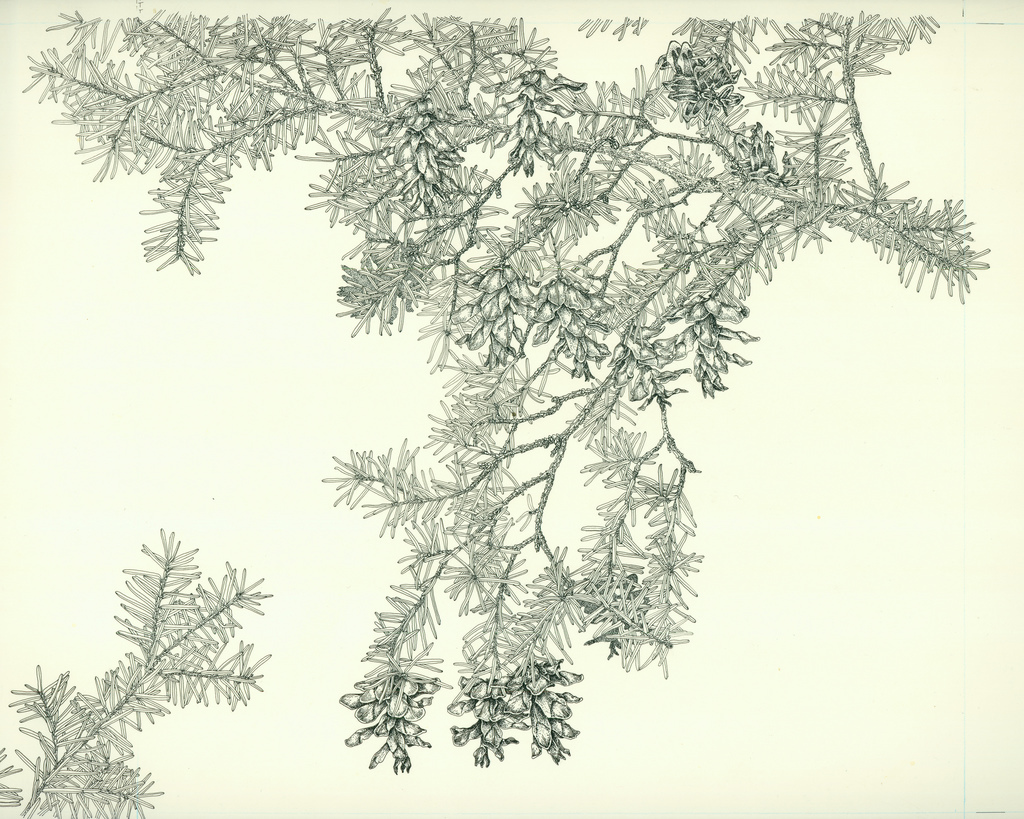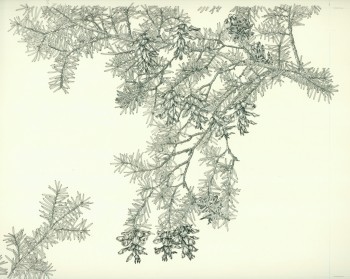
Tsuga caroliniana, first described in 1881 by Georg Engelmann (1809-1884), is commonly known as Carolina hemlock.
Description. Carolina hemlock is an evergreen coniferous species of tree which will grow to mature heights of 100 feet (30 m) tall; exceptional specimens have been measured at 110 feet (34 m) tall with a trunk 45 inches (110 cm) in diameter at breast height under forest conditions. The crown is compact and pyramidal, growing up to 25 feet (8 m) wide. The bark is thick, reddish-brown, becoming fissured between scaly ridges. The branches are stout and usually horizontal, but often slightly drooping. The shoots are red-brown to orange-brown, and finely pubescent. The leaves are 0.2 to 0.8 inch (5 - 20 mm) long and 0.07 to 0.8 inch (1.8 -2 mm) broad, flattened, not tapering toward their ends, with a rounded or slightly notched apex; they radiate outward in all directions from the twigs, and smell of tangerines if crushed. They are glossy dark green above and paler on the underside, with two white stomatal bands. The seed cones are 0.8 to 1.6 inches (2 - 4 cm) long, green, maturing light to medium-brown 6 to 7 months after pollination. When fully open, their scales are positioned at a right angle or reflexed to the central axis.
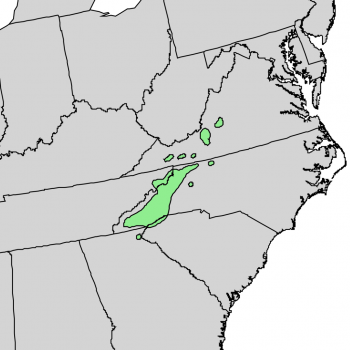
Distribution. This species is native to USA - Ohio, Virginia, Tennessee, North Carolina, South Carolina and Georgia growing at elevations of 2,000 to 5,000 feet (600 -1,500 m) above sea level. Its preferred habitat is xeric rocky mountain slopes, or riparian in ravines and canyons, generally on sites with shallow, nutrient-poor soils where climates are humid, cool, with average precipitation greater than 32 inches (1,000 mm) per year without a dry season. Commonly occurs in mixed hardwood-conifer stands, or sometimes in pure stands.

